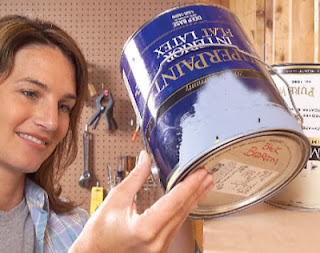Once upon a time, probably about 6 years ago or so, my wife and I walked with our kids to the Zeeland Bakery. Caleb (who was 5 at the time) waited outside with me while my wife and the other kids sauntered into the shop and ordered various donuts and cookies and different types of bread. (It's always a huge undertaking whenever we go to the bakery).
Anyway, while Caleb and I were waiting outside, a lady walked by with a 1-year-old boy in a stroller. I smiled at the lady and Caleb smiled at the lady and he even went so far as to say "Hello." I was proud that the little guy was so polite. And it was this pride which eventually led to my downfall.
See, as the lady was walking away, but while she was still within earshot, I thought I'd demonstrate how polite and kind my little guy was. So I said, loud enough for the lady to hear, "Wasn't that a nice little boy?"
Oh, it was a question that he should have been able to hit out of the park. It was an easy one. A no-brainer. All he had to say was "Yes Dad, that boy seemed very nice, indeed." Had he said that, the lady would have thought I was a super parent because I'd raised such a wonderfully polite little lad. In fact, I figured there was always the off chance that she'd turn her stroller around, shake my hand and ask my advice as to how to raise her own child.
Yes, my mind was brimming with the possibilities and the glory when Caleb spoke up. He raised his little voice to match my raised voice and suddenly, as is always the case when this kind of thing happens, the entire world quit moving. Suddenly, there were no cars--no road noise. The shop doors quit opening and closing. The clocks that had been ticking ceased their workings for a few split seconds. Even the birds and the wind and the airplanes and the fountains went silent. A whisper at one end of Main Street would have been audible at the other. And it was into this utter and complete silence that Caleb bellowed his answer, informing me, the lady, her poor, poor child and everybody else within earshot that, "No," he didn't think that kid was all that much. "In fact," he went on to say, "the kid was actually kind of ugly. His ears were big and his nose was all turned up and his eyes were squinty. Like a rat." As if this wasn't bad enough, Caleb ended by informing me (and all of Zeeland) that he had only said "hello" to the kid because "he felt sorry for him."
Well, I just stared at him in horror and disbelief as he continued to rattle off all sorts of uncomplimentary descriptions that reverberated off the buildings and up and down the silent streets. Silent, that is, except for the wildly squeaking wheels of the lady's stroller as she pushed her child rapidly away from that horrible father and his nasty little son....
I mention this little episode partly as penance but also because it's the perfect example of how kids think and act. If you ask for a child's opinion, you're going to get it. They'll typically tell you exactly what they think. Problem is, while they're usually honest, they don't always exercise the best judgment.
In an earlier article (which you can read HERE), I suggested that it's important to involve your kids in the process of decorating their rooms. You should let them pick the colors, ask them what they like and what they hope to see in their rooms. However, when you do that, you're going to have to be ready for some crazy answers from time to time. In fact, when you ask an 8-year-old what colors he'd like on his walls, don't plan on hearing him say "Oh, a nice medium-beige with an earthy brown would do just lovely." No, get ready for black and orange (halloween colors). Or bright blue and red and yellow (Superman colors).
So, with that said, if you do decide to let them help you decorate their own rooms (which I still believe to be a great idea), you better have a method in mind as to how to incorporate their ideas without completely abandoning the overall look of the room. You both need to be happy with the outcome. And that means compromise. Here are 3 tips:
PICK AN ACCENT WALL
When your kids choose the brightest yellows and oranges, the flashiest greens and blues, a great compromise is to paint one of the walls--an accent wall--with one of those bright, flashy colors. Have them settle on which color they like best and see if you can't work that into a small wall--a wall with a window or a door.
Now, in most cases, when you paint an accent wall, you'd pick the focal point of the room to do this with. In this case, however . . . well, not so much. If you're trying to minimize the effect of the color, then picking the focal point of the room is the last thing you want to do. Just pick a small wall--a wall that's not the first thing you see when you walk into the room--and see if you can't put their color there. They'll be happy, feeling proud when they see their bright wall and you'll be happy because the room doesn't glow like the face of the sun.
PICK MUTED VERSIONS OF THEIR COLOR
Another great compromise that sometimes works in the paint store is to steer kids toward more muted versions of their colors. If they love bright reds and yellows, maybe throw out some options like a rusty red or terracotta and a more muted yellow. Sometimes they'll see these new colors and be completely willing to compromise. Again, with this type of scenario, both of you can potentially reach a mutually happy outcome.
ACCESSORIZE, ACCESSORIZE, ACCESSORIZE
Perhaps the best way of working wild, crazy colors into a decorating scheme is to bring those colors in with accessories. If your kids want to see black and orange or some other funky combination of colors on their walls, but you can't bring yourself to do it, then offer this: coat the walls with a nice neutral color and then bring in accessories that fit your child's desired color scheme. Bring in lampshades with bright colors, find art prints with the colors, switchplates and any number of other accessories that will serve to fill the room with the chosen colors without overloading the walls and driving you crazy.
THE BOTTOM LINE
The bottom line is this: when you bring your kids into the decorating picture, you've got to be ready to compromise. Don't let them decide everything when you hate what they're coming up with. Likewise, don't decide everything yourself when they hate what you're coming up with. You both have to be happy with the outcome for this little project to work. If you hate the room, you're always going to feel irritated when you walk past it. If they hate the room, don't worry, they'll find a way to let you know about it.
So work together, have fun, and compromise!














